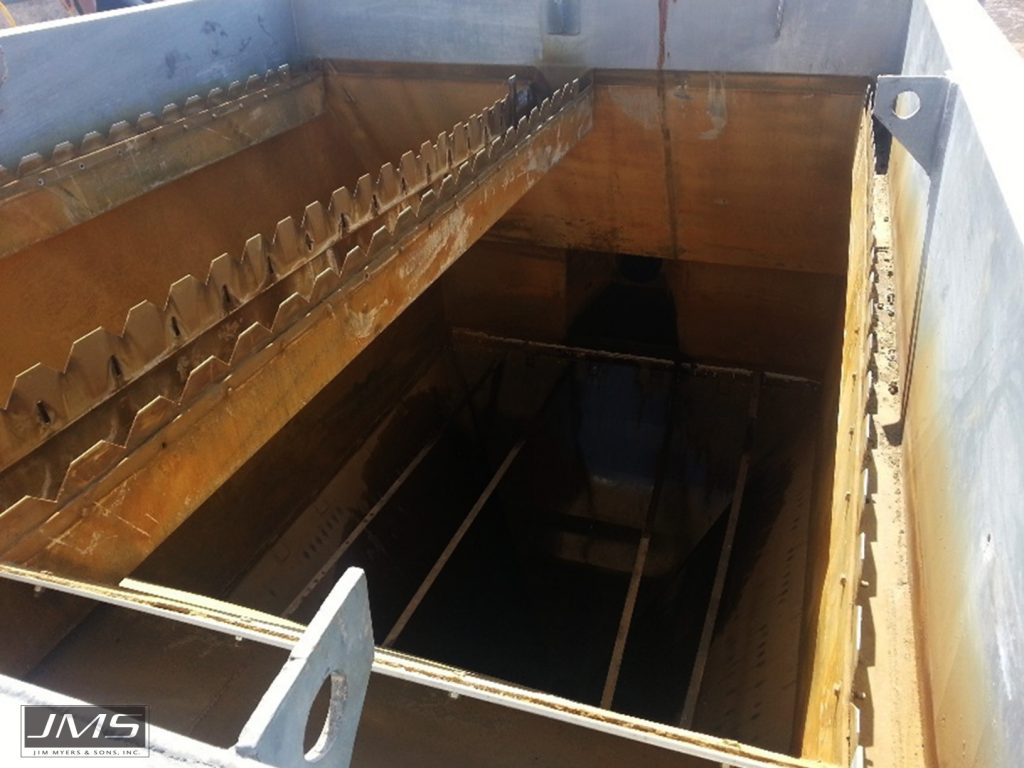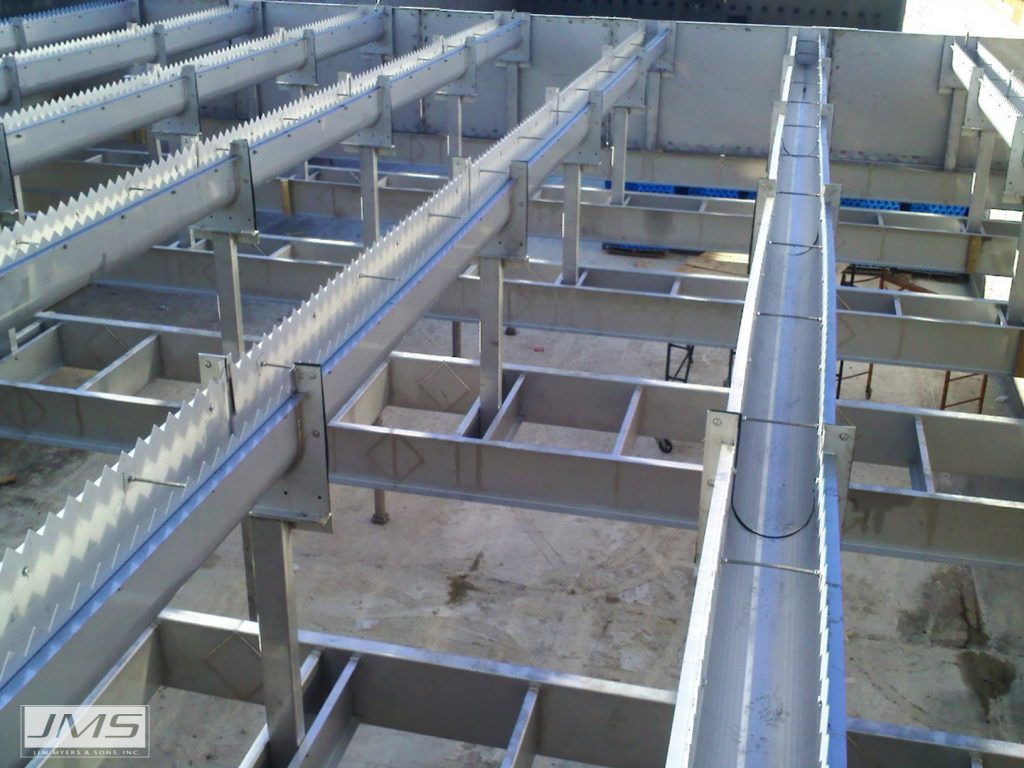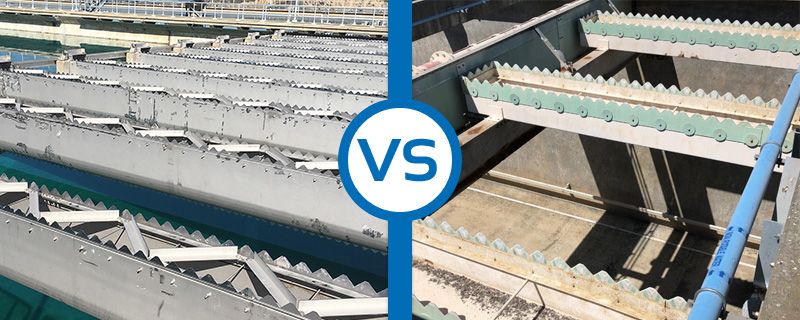Troughs are a key component in water management for water and wastewater operations. They can be supplied in straight or circular configuration for use as effluent troughs, filter troughs, clarifier troughs, and sluice troughs. Careful design to meet the needs of the project is important, as well as the materials of construction for the trough.
Water and wastewater troughs are commonly made of stainless steel, aluminum or fiberglass reinforced plastic (FRP). Each material has its own positives and negatives. Which is the right one for your plant? Assessing your needs will often lead you to the right decision regarding materials of construction. For this discussion, the concentration will be on stainless steel versus FRP.
Plant Considerations for stainless steel vs fiberglass troughs
- Cost-effectiveness over the life cycle of the trough
- Ease of installation and maintenance
- Create the right impression of your plant and operations for employees and visitors
Since cost considerations always ranks high on the list, it is important to look at the cost-effectiveness of the trough over its entire life cycle. FRP troughs have an advertised life of 20 years, whereas stainless steel troughs may last the lifetime of the plant so future replacement costs will not enter the picture. Due to the high strength of stainless steel, unsupported spans of 50+ feet are often used. FRP sections of 20+ feet typically need expensive support beams and require additional labor to install.


Troughs do not require high levels of upkeep compared with other equipment in the plant with moving parts. The smooth surface of stainless steel will shed dirt and debris. Stainless steel is not susceptible to UV degradation. Constant UV exposure weakens the fibrous traits of FRP resulting in changes in the surface characteristics and potentially lowering the FRP trough life. Should fibers release, they could make their way downstream and cause further damage. It is generally recommended to keep FRP surfaces clean to maximize their life.
Stainless steel is a sustainable product and plays a key role in sustainable designs. Its durability and corrosion resistance give it a long service life which will ultimately reduce resource use. Stainless steel is recycled at a high rate, however if some should make it into the landfill no detrimental effect to the soil is expected. It maintains its good looks over its lifetime and makes a great impression on employees and visitors to the plant and will leave the impression of public dollars well spent.
Josh Franks is a Sr. Applications Engineer and has been with JMS for 11 years. Over this time, Josh has had the opportunity to assist our reps in selling equipment from the Mega-TREATMENT, Bio-HANDLING, and Delta-SEPARATION product lines. Currently, he focuses on the Mega-TREATMENT product lines. He has a BS in Mechanical Engineering from NC State University and is a licensed P.E. in North Carolina since 2011. In Josh’s words, “I have enjoyed working with many of you over the last decade, and hope we can continue to grow together in the decades to come.”

